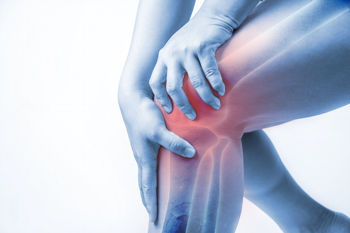Chondromalacia Patella
Typical History
Gradual onset of worsening grinding or pain in the front of the knee (behind the knee cap). Often people experience pain in the knees when standing after being seated for a long period of time. Running and going down (and occasionally up) stairs are also common causes of pain in the condition.
Anatomy of Chondromalacia Patella

Chondro = cartilage, Malacia = softening of tissues, Patella = knee cap
As the name implies this is a condition in which the cartilage on the back of the knee cap softens and wears down (fragments) resulting in pain. Essentially it is arthritis of the joint between the knee cap and the thigh bone.
The condition is divided into three stages
Stage I – mild degeneration of the cartilage (not visible on x-ray)
Stage II – fragmentation of the cartilage (not visible on x-ray)
Stage III – complete destruction of the cartilage such that there is bone-on-bone rubbing of the knee cap on the thigh bone (can be seen on x-ray)
Factors That Contribute to Chondromalacia Patella
- Abnormal position of the knee cap since birth or due to trauma. Alta refers to the knee cap being too high. Baja is the term used when the knee cap is too low. The knee cap may also sit at an abnormal angle due to problems such as knock-knees (genu valgum) or bow legs (genu varum).
- Problems in the feet such as fallen arches (over-pronation) or high arches (over-supination) alter the angles of stress at the knee and can cause similar problems.
- Muscle imbalances such as a tight iliotibial band (a band of tissue on the outside of the thigh) or weakness of the inner thigh muscles can also contribute to the condition.
Any of these situations can result in the knee cap failing to glide (called tracking) properly along the thigh bone as the knee moves. This abnormal gliding wears down the cartilage on the back of the knee cap causing chondromalacia patella.
Our doctors will examine your knees looking for signs of abnormal position and function of the knee cap. He/She will also assess to determine how the joint feels as it glides past the thigh bone. Often grinding or pain will be experienced during the exam and are significant clues to indicate chondromalacia patella is the problem.
The doctors at Cummings Chiropractic Family Wellness have developed a highly effective strategy to achieve rapid results in treating chondromalacia patella. The protocol involves two basic phases. The first phase is designed to alleviate pain rapidly. This involves a specific machine called Diapulse with ice to reduce inflammation and the doctor applying a rapid stretch to a specific ligament in the knee which allows the knee cap to glide more freely. The second phase is designed to minimize recurrences of pain and to rehabilitate the condition. This includes supplementation to assist in rebuilding the cartilage of the knee cap with high quality products to maximize effect and a referral for orthotics where necessary.
The prognosis depends on the stage of the condition the first time the condition is identified. Stages I and II are reversible and can be resolved. Once the condition has entered Stage III symptomatic relief may be obtained but the condition can not be reversed.
We Can Help
Discover for yourself how chiropractic may help you. Contact us today to schedule an appointment!
CONTACT US »

